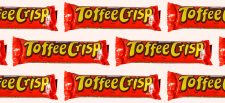The National Farmers’ Union (NFU) Scotland has unveiled Phase Two of its ShelfWatch survey, which will continue to look at the origin of foods on Scottish supermarket shelves.
The first phase of the survey was started in January, with NFU Scotland stating that its intentions were to “shine a light on how and where Scottish produce is being made available to buy”.
An independent research firm visited 71 stores across mainland Scotland, looking at own-label beef, lamb, pork, chicken, eggs, vegetables and dairy products (milk, cheese, butter and yoghurt) on offer in Tesco, Asda, Morrisons, Sainsbury’s, Co-op, Marks and Spencer, Lidl and Aldi stores. NFU Scotland reported that more than 15,000 products were reviewed.
The results from Phase Two will be reported in June, and two additional surveys will be held later in the year. All retailers involved in the latest survey were notified 24 hours in advance of the study commencing.
Since the ShelfWatch Phase One results were reported, Asda attended NFU Scotland’s annual conference, and the union reported that a further meeting will take place. NFU Scotland also met with Aldi, Tesco and Sainsbury’s since Phase One and said that meetings with M&S and Morrisons were planned. However, NFU Scotland’s requests for meetings with Lidl and Co-op had not received replies.
NFU Scotland said that ShelfWatch Phase Two would “continue to look at the availability and origin of all fresh and lightly processed goods on Scottish supermarket shelves”, with a one-off look at branded Scottish products in the dairy category. The survey will also examine product labelling to “better understand the transparency for consumers” in making choices.
NFU Scotland chief executive John Davidson said: “We know that Scottish consumers want to support Scottish produce and our major retailers have a huge responsibility in delivering on that. Over the coming year, ShelfWatch will identify those retailers who are giving outstanding support to local food production in Scotland and those who must do better.
“The first results in February revealed a completely mixed bag of what is going on in shops across the country and available to Scotland’s consumers. While it was encouraging to see that there was strong support for Scottish and UK produce in general and examples of some retailers stocking 100 percent Scottish, others at that time had little or no Scottish produce amongst own-label goods on their shelves in some sectors.”
Davidson said: “The results of Phase One, and what we discover during Phase Two, provide us with a fantastic opportunity to give credit to those who are tremendous supporters of local food production within Scotland. Similarly, we will also use these results to inform discussions with those retailers who have been identified as having zero or low levels of Scottish produce available, to better understand any sourcing challenges they have and look to resolve these.
“Our ambition is that, when we come to complete our final ShelfWatch at the end of this year, there has been a marked improvement in the availability of Scottish produce in Scottish stores, allowing our consumers to fully support the hard work of Scottish farmers and crofters.”









